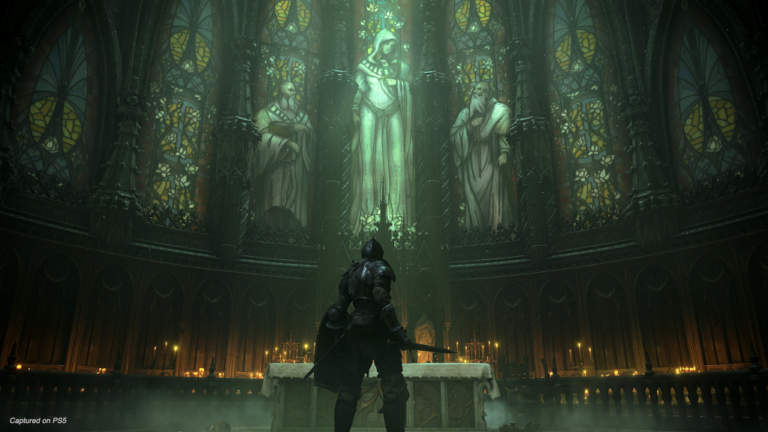The Dark Atmosphere of Alan Wake 2
Alan Wake 2 immerses players in a haunting environment that intricately blends psychological horror with deeply affecting gameplay. The game’s atmosphere is crafted through a meticulous synergy of environmental design, soundscapes, and lighting, all of which serve to amplify a sense of dread and suspense. From the moment players step into this foreboding world, they encounter a landscape that feels alive, echoing the protagonist’s internal struggles. The environments range from shadowy forests to eerie, decrepit buildings, each crafted to evoke fear and unease.
One of the most notable aspects of Alan Wake 2’s ambiance is its sound design. Subtle creaks, whispers, and distant echoes deepen the immersive experience, with sound cues that create an unsettling tension. These auditory elements work in tandem with the game’s visual components, ensuring that players are not just spectators but participants in a psychological thriller. The ambient sounds often escalate during critical moments, heightening the stakes and drawing players further into the protagonist’s disorienting journey.
Lighting plays a pivotal role in establishing the game’s dark atmosphere. Stark contrasts between light and shadow create an unpredictable landscape, where danger lurks in every corner. Dimly lit paths may conceal hidden threats, forcing players to be ever-vigilant. This interplay of light and darkness mirrors the character’s psyche, illustrating the challenges between clarity and confusion. As players navigate these treacherous terrains, the atmosphere envelops them in a sense of foreboding that enhances suspense at every turn.
The themes of psychological horror are threaded throughout Alan Wake 2, making every aspect of its environment crucial to the storytelling. By intertwining existential dread with a narrative that challenges the boundaries of reality, the game constructs an experience where the setting acts almost as a character itself, shaping the trajectory of the protagonist’s journey. Ultimately, the dark atmosphere meticulously developed in Alan Wake 2 is not just a backdrop but a vital element that influences gameplay and emotional engagement.
Unraveling the Tangled Plot
Alan Wake 2 presents a narrative structure that captivates and challenges players, weaving together intricate storylines that enhance the overall gaming experience. At the heart of this complex narrative is the interplay between various character arcs, which not only develops individual profiles but also embellishes the interconnectedness of their journeys. The protagonist’s struggle reflects themes of loss and identity, resonating deeply with players as they navigate through the dark atmosphere that the game meticulously crafts.
The nonlinear storytelling employed in Alan Wake 2 serves as a powerful tool to maintain engagement. Players often experience events out of chronological order, fostering a sense of curiosity and anticipation. This technique allows for the gradual revelation of plot details, immersing players in a world where every twist and turn unveils deeper insights into the characters’ motivations and the mysteries surrounding them.
A defining aspect of the game is its exploration of the boundary between fiction and reality. The narrative probes philosophical questions about the nature of storytelling, suggesting that the realm of fiction can sometimes bleed into reality. This theme is illustrated through surprising plot twists that force players to reevaluate their perceptions of the unfolding story and its characters. As players unravel the tangled plot, they encounter moments that challenge their understanding of truth and illusion, reinforcing the game’s thematic depth.
Furthermore, the emotional landscapes that characters traverse exemplify the game’s ability to elicit complex feelings from the player. The constant struggle against the backdrop of a dark and immersive environment creates a poignancy that strengthens the player’s attachment to the narrative. Overall, Alan Wake 2’s intricate narrative structure not only keeps players engaged but also enhances the overall emotional and intellectual impact of the game.
Visual Delight: Graphics and Art Design
In the realm of video games, the graphical fidelity and artistic vision significantly contribute to player immersion. Alan Wake 2 excels in this domain, reflecting remarkable advancements in graphics and art design that enhance the overall experience. The character designs are intricately crafted, showcasing high-resolution textures that bring each figure to life. From the protagonist to the supporting cast, every character embodies a unique personality, accentuated by realistic animations and expressive facial features, which forge a deeper emotional connection with the player.
Environmental details play a crucial role in constructing the eerie atmosphere that Alan Wake 2 is known for. The developers have meticulously designed the game’s settings, resulting in breathtaking landscapes that range from foreboding forests to hauntingly desolate towns. Each environment is replete with intricate textures, lifelike lighting, and dynamic weather systems that not only enhance realism but also contribute to the storytelling. The depth and vibrancy of these locales are further magnified by the clever use of color palettes, which shift dramatically to reflect the game’s dynamic emotional landscape.
Moreover, the integration of special effects elevates the visual storytelling to unprecedented heights. From the interplay of light and shadow, which amplifies tension and suspense, to the environmental effects like fog and rain that envelop scenes in an ominous gloom, every visual element is purposefully employed. These artistic choices not only create a visually stunning experience but also serve to immerse players in the complex narrative. The synergy between graphics, art design, and sound results in a cohesive world that captivates and engages, demonstrating the power of effective visual storytelling in this highly anticipated sequel.
The Experience: Player Reception and Critical Acclaim
Alan Wake 2 has garnered considerable attention from both players and critics since its release, with many embracing its intricate narrative and immersive gameplay. Players have lauded the game for its ability to create a palpable sense of tension and dread, drawing them deeper into its dark atmosphere. The emotional weight of the story resonates with audiences, as they navigate through compelling character arcs and a genuinely unsettling environment. The intricate design of the gameplay mechanics, which intertwine shooting and puzzle-solving elements, is also a point of discussion among players, who appreciate the balance it offers between action and contemplation.
Critics have similarly praised Alan Wake 2 for its visual design and storytelling depth, establishing it as a noteworthy entry in the survival horror genre. The artistry displayed in the game’s environments has been frequently highlighted, creating a hauntingly beautiful backdrop that enhances the overall experience. Many reviews reflect on how effectively the game manages to build suspense and encourages players to remain engaged throughout. Furthermore, the unexpected plot twists and layered narrative have captivated the gaming community, igniting discussions about various interpretations and theories regarding the storyline.
The game has successfully lived up to the expectations set by its predecessor while carving out its own identity. Players and critics alike have acknowledged its significant contributions to the survival horror landscape, reaffirming the franchise’s relevance in contemporary gaming. However, it is noteworthy that while many acclaim its innovations and creative direction, there are some who express concerns regarding pacing and difficulty spikes that could potentially detract from the experience. Nonetheless, the overall reception suggests that Alan Wake 2 is a compelling continuation of the original’s legacy, offering a rich exploration of fear, memory, and storytelling that resonates deeply with its audience.


